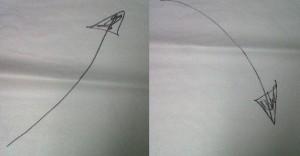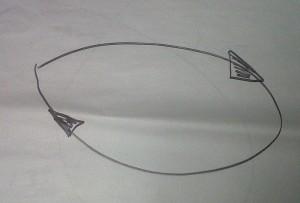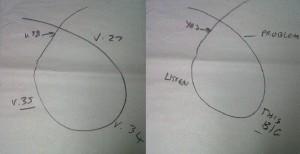A deconstruction
Last week I shared on Twitter that I was planning an interactive sermon, and asked whether people thought it was ‘mad, bad, or brave’ to do so. Encouraged by the responses, and my own conviction, I went ahead and preached it last night. The sermon was the first in a series on ‘prayers overheard’, and drew on Mary’s encounter with the angel Gabriel in Luke 1 v. 26 – 39. Although an encounter with an angel, rather than with God himself, it teaches one particularly important lesson about prayer.
I shall set out below exactly what ‘happened’ in the interactive sermon, and then offer one or two critiques at the bottom of the post. The illustrations, which may look a little ‘rough and ready’ were photographed directly from the flip-chart, so as to give you a feel of how things looked.
______________________________
- After reading the passage and praying, the first thing we did was to watch Tony Jordan’s depiction of it from The Nativity, an excerpt of which you can see below. People were then invited to comment on how they felt about the depictions of Mary, Gabriel an d the story itself
2. I recounted a conversation with Master Coach , Claire Pedrick about Christian conversations. All too often we get stuck in a kind of ‘empathetic loop’, where we build rapport by mirroring tone etc, but never effect change by altering it. My colleague and I role-played just such a conversation. I then explained that prayer often suffers from the same problem, and fails to provide a real engagement between us and God.
3. We looked at different ‘patterns’ of prayer on the flip-chart:

Sometimes prayers are like the UP arrow – all praise (which is good), but no engagement.
Other times they are like the DOWN arrow – all confession and contrition, which can be good too, but no engagement.

On other occasions prayer can get stuck in a loop between “I am a bad Christian” and “I cannot pray”. As we go round the loop, each seems to confirm the other, and real engagement never happens.
4. At this point, people were encouraged to use the felt tip pens and paper on their seats to draw their own ‘patterns’ of prayer, some of which they then shared.
5. I then quoted a very honest account of ‘troubled’ prayer from the God52 blog.
6. We then looked at the pattern of Mary’s conversation with the angel, where she moves from initial surprise, to plumbing the depths of the implications, to hearing God’s response through the angel, to saying ‘yes’. We examined how this might be a pattern for our own prayers:

7. People were asked to read out other passages where the person encountering God had said an immediate ‘yes’ and moved on. These ranged from Abraham in Genesis to Paul in Acts.
8. We considered how the habit of saying ‘yes’ served Mary well in later years – offering her unquestioning obedience at teh wedding in Cana, at the foot of the cross, and in patiently waiting for the outpouring of the Spirit in Jerusalem.
9. We concluded by saying that the ‘tone’ of our private engagement with God in prayer will set the tone of our public faith – for good or ill. ‘Lord, teach us to pray’.
________________________
- In all honesty, low numbers made it obvious that some stayed away because of the pre-advertised interactive nature of the sermon.
- Participation was offered at different levels, from the non-threatening (commenting on a film or reading out a Bible passage) to the more challenging (drawing a graphic representation of your prayer life and sharing it). A middle course was there too, for those who wanted to engage more than just listening by doing the drawing, but had no desire to share it.
- Quoting from the God52 blog was a deliberate move to reassure that problems with prayer stretch beyond the church fellowship.
- The use of role play near the beginning allowed for a few nervous giggles, and broke the ice for others to share more later.
- Reactions afterwards were almost entirely positive. This does not mean that everybody enjoyed it – only that those who spoke to me did.
- I could see more people scribbling notes to keep than in any other sermon I have ever preached.
- You will notice that I have used the pronoun ‘we’ throughout, although I was the preacher. This is because it felt like a truly communal act.
Would I try it again? Definitely!
